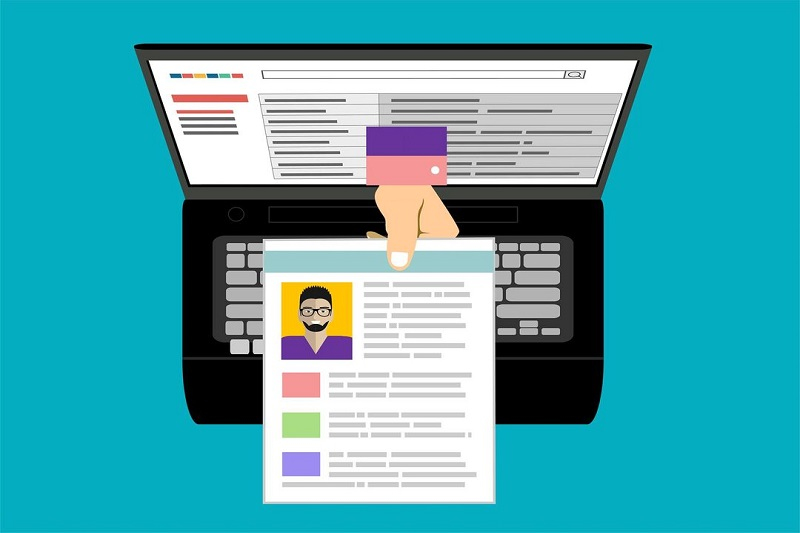ATD Blog
5 Tips for Creating Your Instructional Design Portfolio
Fri May 14 2021

Bookmark
A portfolio provides a way to share actual samples of your work with prospective employers. Creating a strong instructional design portfolio is one of the best ways to show off your skills and land better opportunities. The tips in this post will help you stand out in the field.
Let’s dive in!
1. Solve Real-World Problems
One of the top qualities that a hiring manager looks for when evaluating portfolios is a candidate’s ability to solve real-world problems with instructional design.
When determining which projects to include in your portfolio, you should think about them from a problem-solving perspective rather than an information-presentation perspective.
For example, don’t ask yourself which topic you would like to create a course about. Instead, think about real-world problems that are caused by gaps in knowledge or skill.
Draw on your experience in past professional roles. What problems did people commonly struggle with?
If the problems were caused by gaps in knowledge or skill, then you may be able to design a learning solution to help solve them.
Evaluating a performance problem like this before designing an appropriate solution is a great way to demonstrate your instructional design expertise.
2. Include Process Write-Ups
Showing off a beautiful learning solution often isn’t enough. Hiring managers want to know what role you played in creating that solution.
That’s where the process write-up comes in. Use the process write-up to tell us which problem the project is helping solve, why you approached the problem the way that you did, and how you followed through to design and develop the solution.
This gives potential employers and clients insight into your process. It’s also an opportunity for you to show off your depth of expertise.
For example, demonstrate why your solution is a good fit for the problem that it’s helping solve. Explain your design decisions. Highlight the complex development challenges that you overcame.
The process write-up is often just as important as the project itself. If people don’t know what role you played in the project, they are left to make assumptions about who else may have been involved.
3. Refine Your Visual Design
Humans are visual creatures. We make snap judgements about things based on how they look.
If your portfolio website and projects look professional and polished, then the people evaluating your portfolio will view your site (and, by extension, you) in high regard. As long as the rest of your content doesn’t disappoint, you’ll be in great shape.
However, if your site doesn’t look professional due to poor visual design skills, then you may be fighting an uphill battle. The first impression will work against you, and the hiring manager or potential client will need to look for things to redeem you (if they even keep looking at all).
That being said, you don’t need to be a visual design expert. As long as you get a handle on the basics and embrace the spirit of iteration, you’ll be able to design professional layouts.
Use a tool like Adobe XD to create multiple versions of your layout before diving into your authoring tool or website builder of choice. This lets you focus on perfecting the visual design before moving on to programming.
4. Include Various Projects
You don’t need a dozen projects on your portfolio, but if you can showcase various deliverables, then it will demonstrate your skill set.
Many hiring managers are looking for instructional designers who can fill multiple roles. They want someone who can edit videos, write storyboards, develop e-learning, and create job aids.
When you can show off a handful of unique deliverables that solve different problems, it builds the hiring manager’s confidence that you’re not only skilled in various tools but can match the right solution to the problem at hand.
5. Highlight Your Experiences
Many hiring managers and potential clients come to your site because they want to learn more about you. Don’t feel pressured to make your portfolio “corporate.”
Instead, bring you and your experiences to the forefront. Show off a nice photo of yourself at the top of your site. Share more about your journey and why instructional design is the perfect field for you.
Also, when identifying project ideas, it’s great if you can draw from your past experiences or passions.
For example, if you’ve been scuba diving for decades, try designing a learning solution for someone just getting started. If you love gardening, try designing a solution that teaches people how to keep their plants alive.
Think of each project as an entry point into a deeper conversation with you. When you’re passionate about the topic, problem, and solution, it will show.
Projects like this show people what you can do, but they also tell people more about who you are as a person. When people remember you, they’ll be more likely to call you in for an interview or reach out to you about a potential project.
Creating an instructional design portfolio is your opportunity to show potential employers and clients who you are, what you can do, and what it would be like to work with you.
You’ll notice the difference when you walk into your next interview or client discussion. When the person on the other side of the table opens with, “I love your portfolio,” it makes the rest of the conversation go much more smoothly (and often in your favor).
More from ATD

